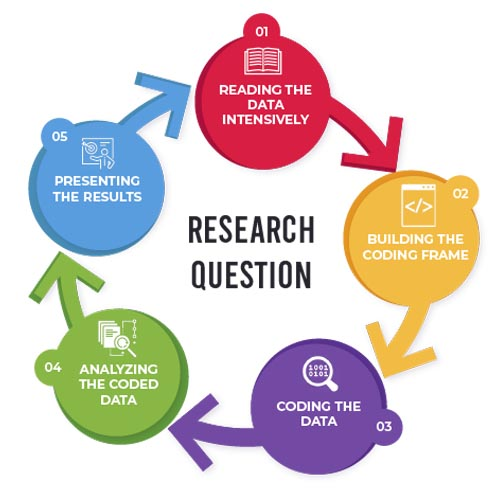Mention the steps involved in analyzing Interview transcripts in Qualitative research
In-Brief
- Qualitative research is a vital part of a successful research study. A Qualitative analysis adds colour to academic and business reports
- Interview transcripts are the best qualitative analysis resources available qualitative data analysis services help you with the right methods to use them successfully
- You will face a variety of pitfall when you carryout qualitative research. Textual data analysis services provide a variety of transcript service to get the best out of the research work you are engaged
Introduction
The qualitative type of data is subjective and consist of in-depth information typically presented in the word format. Analyzing this type of data entails reading a large number of transcripts for similarities or difference by simultaneously helpful in findings themes and developing categories. In the traditional method, researchers use coloured pens to categories data. But recently, the use of software that is specifically designed to reduce technical sophistication; thus,it makes the process relatively more comfortable. As the name shows, qualitative research is mainly focusing on the qualities, and the quantitative approach focuses heavily on statistics, maths and computational technique.
Analyzing qualitative interview
The two primary approaches to do Qualitative business research and analysis is, Inductive and Deductive.
- Inductive methods of analyzing Interview Transcripts
This inductive method is sub-classified into two types of analysis they are thematic or narrative analysis. The thematic content analysis starts by defining out the bias and establishing your overarching Impression of data. It utilizes by approaching your data with the predetermined framework, to identify common themes and also helps to find common patterns between the data set.
The narrative type of analysis involves making a descriptive answer from the interview respondent from their original report. This type of qualitative data analysis is used to highlight important aspects of the customer response to the questions. Sample qualitative data analysis plan allows researchers to access the key points found in the other relevant researches.
- A deductive approach to Qualitative analysis
The deductive analysis requires data that is structured and predetermined. In this type, the researcher classifies their research work before the investigation. Then, they’ll map connections in the data set to those specific groups.
Each of this Statistical data analysis in qualitative market research method tends to have benefit in research. Inductive analyses will produce more defined findings. However, deductive analyses allow the researcher to point out key themes essential to research work they are engaged.

Transcribing the qualitative interview
A good Quantitative data analysis in business research result relies entirely on the accuracy of the data provided. So, it is harder to achieve this with qualitative research. It is easy to get an outcome that is not usable to the study. But collecting the output from the reliable source with good results is difficult.
Steps to do Qualitative analysis of interviews
The thematic analysis method is the most common in qualitative research. The following are the six steps to considerqualitative factors in business decision making is,
- Read the transcripts:
By going through the transcripts, identify the common themes of the research. It will help you to do a final summation of the data. Read each transcri[pt carefully to find evidence to your research and make a strong foundation for your research, and that will also help you to find hone insights.
- Annotate the transcripts:
Annotating the transcript is the process of labelling the relevant key terms, phrases or sentence or section codes. This codes will help to identify essential qualitative data types and patterns. These labels can highlight concepts, the difference in data, opinion of others, process or any other relevant thins. Annotations process will help you organize your data set for dissemination.
- Conceptualize the data
Conceptualizing qualitative data is the process of arranging and grouping data based on critical themes to publish content. These are available themes during the initial review of the transcripts. To carry out this step, create categories and subcategories by grouping the data sets created during annotation. Market research qualitative data analysiswill help researchers to eliminate or join certain data sets to keep the data relevant to your study.
- Segment the data
Segmentation is the step used to position and connects these categories that separated in the previous step. It allows researchers to establish the bulk of your data in a close-knit way. So, start by labelling your groups, then describe their connections.
- Analyze the segments
Start the step by determining if there is a hierarchy among your categories. Determine if there is a presence of more important data set than the other, or do draw a figure to summarize the results. This stage may be helpful to align qualitative data with any quantitative data you collected.
- Write the results
Your analysis is complete only if you write your result. Use your insight recordings to build and verify theories, that answer central questions in your research area. Primary and secondary data in statistics describe your categories and explain how they are connected using a neutral objective.Interpret your results in light of relevant subject studies, theories, and concepts closely related to your research.
Conclusion
Qualitative data provides elusive information to researchers to carry out the research. Transcripts allow you to capture original responses from your respondents. You get their response naturally using their own words and not by summarized version in your notes. Our consultation provides a data analysis plan for qualitative research for allowing you to focus on high-quality research work.
References
- Burnard, P. (1991). A method of analyzing interview transcripts in qualitative research. Nurse education today, 11(6), 461-466.
- Appleton, J. V. (1995). Analyzing qualitative interview data: addressing issues of validity andreliability. Journal of advanced nursing, 22(5), 993-997.
- Luna‐Reyes, L. F., & Andersen, D. L. (2003). The Process of Collecting and analyzing qualitative data for system dynamics: methods and models. System Dynamics Review: The Journal of the System Dynamics Society, 19(4), 271-296.
- Fereday, J., & Muir-Cochrane, E. (2006). Demonstrating rigour using thematic analysis: An approach to inductive and deductive coding and theme development study. International journal for qualitative methods, 5(1), 80-92.



 Previous Post
Previous Post Next Post
Next Post